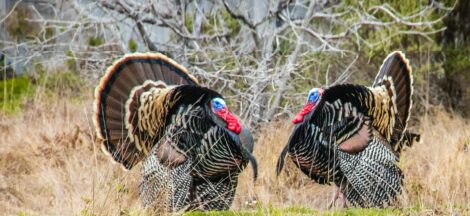Elk hunting season is a time of excitement and anticipation for hunters across the United States. With diverse landscapes and healthy elk populations, the opportunities for a successful hunt are plentiful. However, understanding state regulations and employing best practices are essential to ensuring an enjoyable and ethical hunting experience. In this article, we’ll explore the ins and outs of elk hunting season, including state regulations, best practices, and tips for a successful hunt.
Understanding State Regulations
Each state has its own set of hunting regulations, including specific rules for elk hunting. Familiarizing yourself with these regulations is crucial to a successful hunt and helps ensure the sustainability of elk populations. Here are some key aspects to consider:
1. Tag Application Processes
Most states require hunters to obtain an elk tag, which may be available through a lottery or over-the-counter system. The application process varies by state, and non-resident hunters may face additional restrictions. Be sure to research your chosen state’s tag application process well in advance of the hunting season to secure your opportunity to hunt.
2. Season Dates
Elk hunting season dates vary by state and hunting unit, with different seasons for archery, rifle, and muzzleloader hunters. Additionally, some states have separate seasons for antlered and antlerless elk. Familiarize yourself with the specific season dates for your chosen hunting method and unit to ensure you’re hunting legally.
3. Hunting Unit Boundaries
States often divide their elk hunting areas into specific units, each with its own set of regulations and tag quotas. Be sure to research the boundaries of your chosen hunting unit and adhere to any specific rules that may apply.
4. Legal Hunting Methods
Each state has its own regulations regarding legal hunting methods for elk, which may include restrictions on firearm types, archery equipment, and ammunition. Be sure to familiarize yourself with the legal hunting methods for your chosen state and hunting unit to avoid penalties and ensure an ethical hunt.
Elk Hunting Best Practices
In addition to understanding state regulations, employing best practices during your elk hunt is crucial to ensuring a successful and enjoyable experience. These best practices include:
1. Physical Preparation
Elk hunting can be physically demanding, particularly in rugged terrain and at high elevations. Engage in regular cardiovascular and strength training exercises leading up to your hunt, and practice carrying your gear over long distances to prepare for the demands of elk hunting.
2. Scouting
Pre-hunt scouting is essential for a successful elk hunt. Familiarize yourself with your chosen hunting area, including terrain, water sources, and elk movement patterns. Utilize tools like topographic maps, aerial imagery, and GPS devices to scout remotely and plan your hunting strategy.
3. Shot Placement
Good shot placement is crucial for a quick, humane kill. Practice with your chosen hunting method regularly and only take shots when you’re confident in your ability to make a clean, ethical kill. Be patient and wait for the right opportunity to present itself.
4. Leave No Trace
Respect the environment and follow Leave No Trace principles while hunting. Pack out all trash, avoid damaging vegetation, and minimize your impact on the landscape. This helps preserve the natural beauty of our hunting areas and promotes a positive image of hunters within the community.
5. Learn from Other Hunters
Connecting with experienced elk hunters can provide invaluable insights and tips for your hunt. Join online forums, attend local hunting events, or engage with others in the hunting community to learn from their experiences and improve your own hunting skills.
Tips for a Successful Elk Hunt
Here are some additional tips to help you make the most of your elk hunting season:
1. Proper Gear
Invest in high-quality gear designed for the specific demands of elk hunting. This includes clothing, boots, optics, and other essential equipment. Having reliable gear can make all the difference in both your comfort and success during the hunt.
2. Practice
Regularly practice with your chosen hunting method, whether it’s a rifle, bow, or muzzleloader. Develop your skills and accuracy, and always practice at distances similar to those you’ll encounter in the field.
3. Patience
Elk hunting often requires patience and persistence. Don’t get discouraged if you don’t find success right away. Stick to your plan, continue scouting and learning from your experiences, and be prepared to adapt your strategy as needed.
4. Teamwork
If hunting with a group, develop a solid plan and communicate effectively with your hunting partners. Working together can increase your chances of success and create a memorable shared experience.
5. Safety
Always prioritize safety while hunting. Familiarize yourself with firearm or archery safety practices, and be aware of your surroundings at all times. Carry a basic first aid kit, and let someone know your hunting plans and expected return time in case of an emergency.
In conclusion, understanding state regulations and employing best practices are crucial to ensuring a successful and enjoyable elk hunting season. By investing in proper preparation, respecting the environment and the animals you pursue, and learning from others, you can create unforgettable hunting memories and further develop your skills as an elk hunter. Good luck, and happy hunting!





 The History and Conservation of Elk in North America
The History and Conservation of Elk in North America